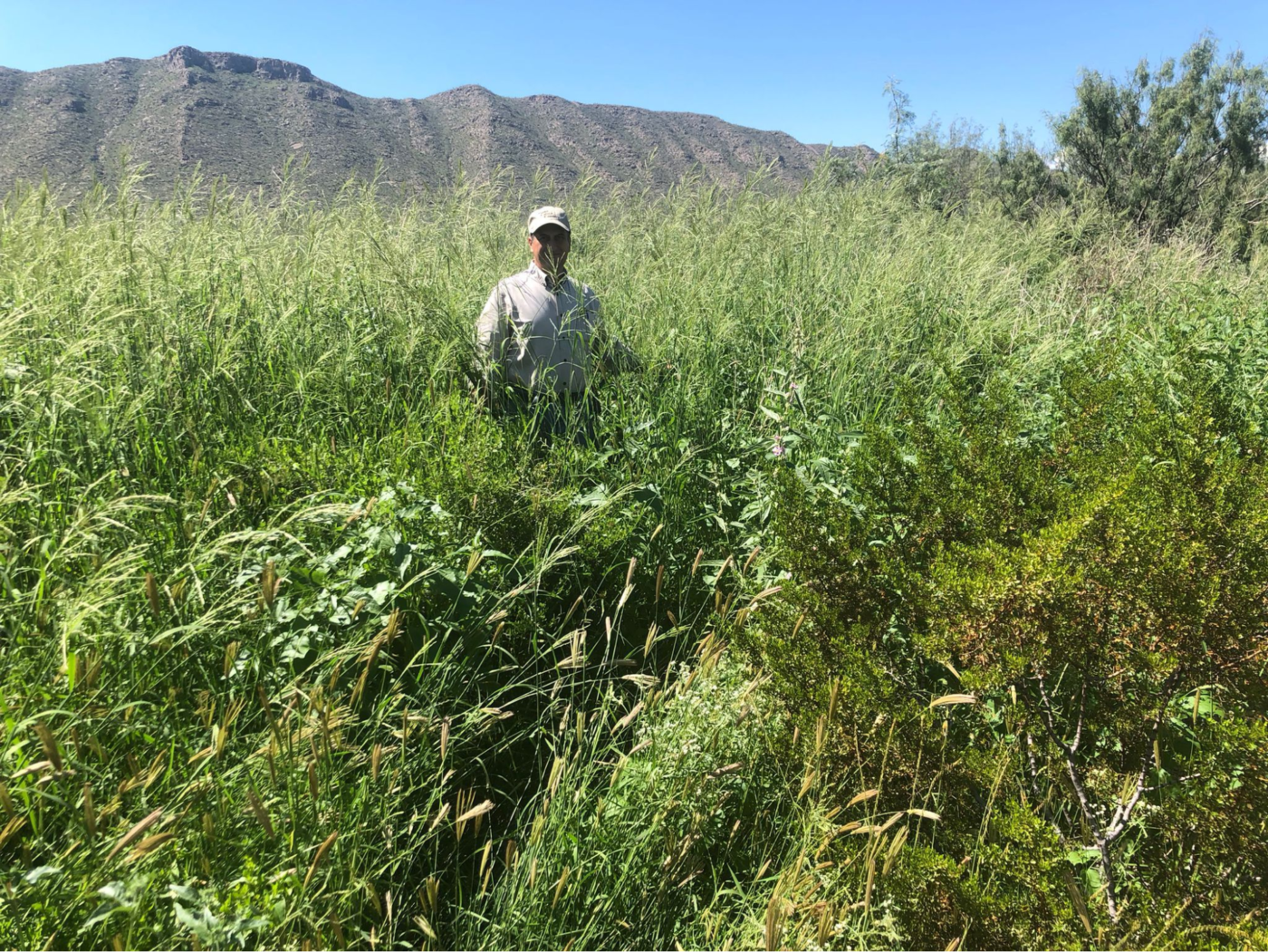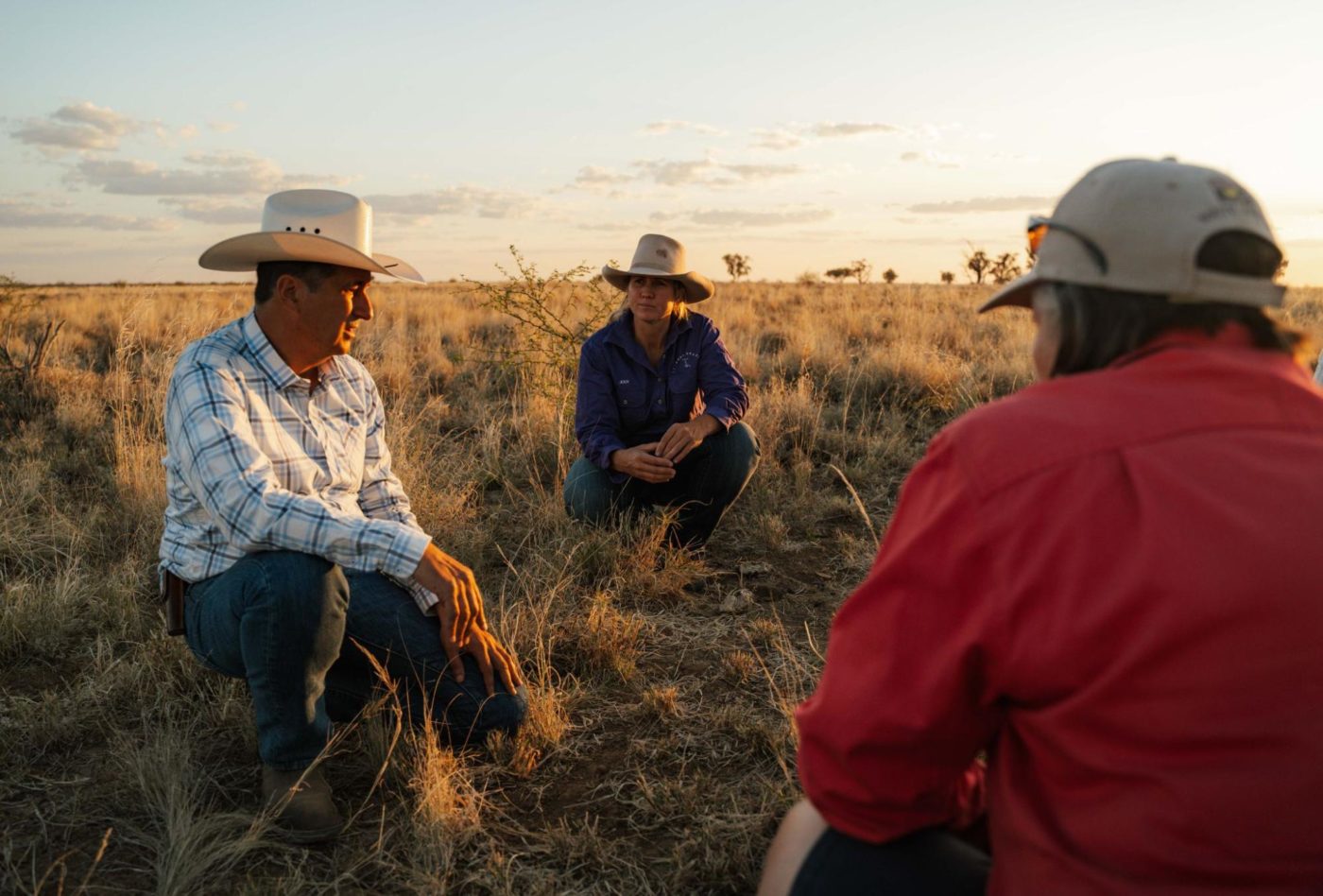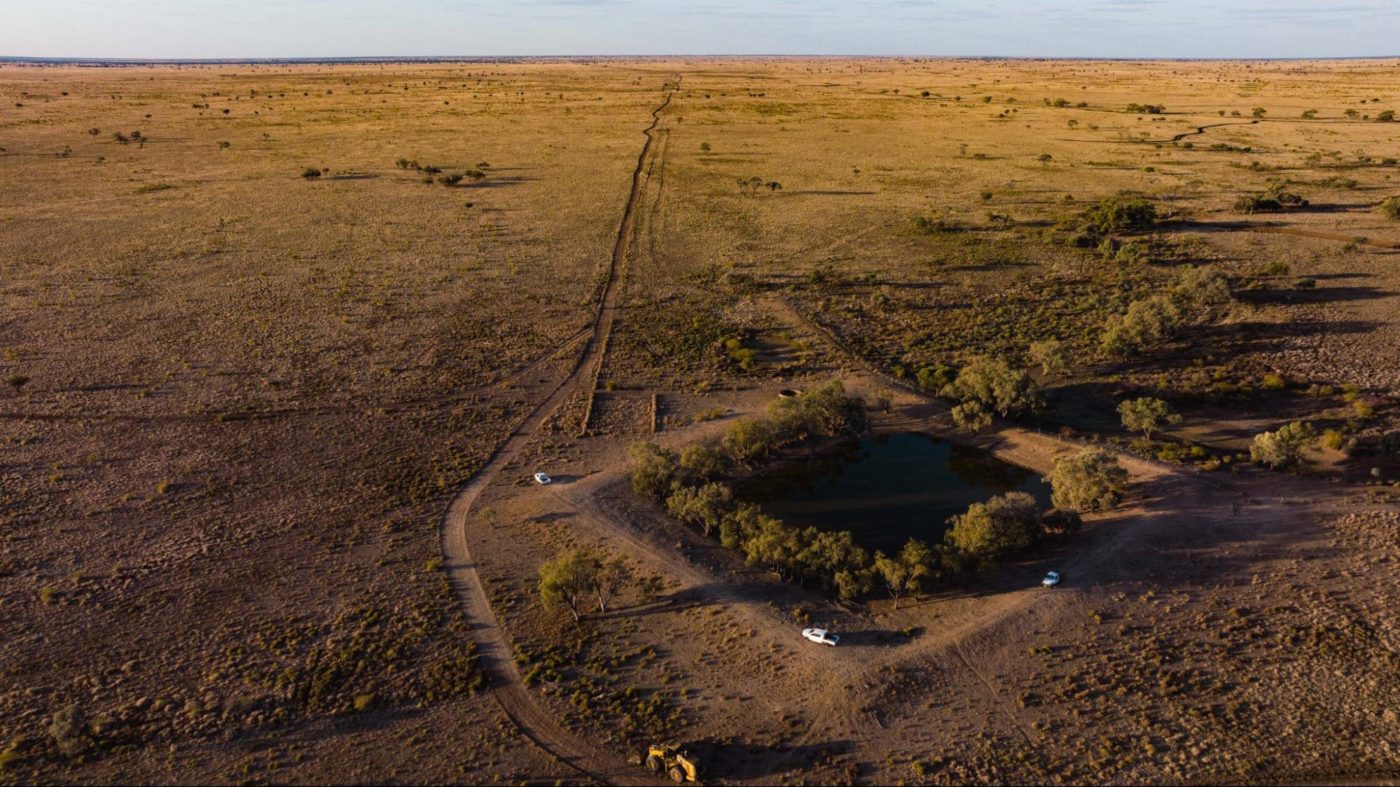‘The land of milk and honey’
Inspiration from the Chihuahuan Desert and the Mitchell Grass Downs
Soils for Life CEO Eli Court attended the Regenerative Rangelands Conference on 30-31 August 2023 at Latrobe Station, in Longreach Qld. The conference was organised by Jody Brown and attended by graziers from around Australia’s semi-arid rangelands, including Graham, Cathy and Harriet Finlayson and Glenn Humbert and Julie Conder who have been involved in our Rangelands Living Skin project.
The event had a strong focus on grazing management and rehydration in semi-arid environments. Alejandro Carrillo, a rancher from Chihuahua, Mexico (who has become famous for arid rangeland regeneration) was the keynote speaker. He provided an inspirational picture of what could be achieved in these environments with the right management. He runs 500 cows and 300 sheep (along with some donkeys) on a 12,000 hectare ranch. Formerly highly degraded with lots of bare ground and little biodiversity, it has now become, in his words, a ‘land of milk and honey’, despite worsening weather and rainfall patterns.
Eli shares some reflections on the event below.
Diversity in the landscape creates resilience
Rangelands graziers around the world are grappling with increasingly extreme fluctuations between flood and drought. We need to look at them together, as two extremes of a cycle. Building diversity in the landscape can create resilience to both flood and drought, by creating the conditions where soils can absorb more water during flooding, preventing erosion and other damage, and then releasing that stored water slowly during dry periods, supporting plants to stay healthy and living longer through drought, and providing rain-ready plants for when the next rains arrive.
Drone image of Latrobe Station
Building plant diversity in rangelands starts with grazing management
Alejandro talked about how increasing the intensity of animal impact through smaller paddocks (in his case up to 300-400 cows per hectare) improves fertility and stimulates plant growth. Increased plant growth improves soil conditions through root penetration and stimulated soil biology. Root penetration and soil biology reduce compaction, improve soil structure and increase aeration and water absorption. Increased aeration and water absorption create the conditions for more diverse, higher succession plant species to grow, and soil biology to wake up (what Alejandro called his ‘micro herd’), and so on…
Alejandro found some improvement occurred moving from set stocking to 3 rotations a year, but the real step change occurred when they moved to twice daily rotations, supported by a strip grazing design of permanent fences, with temporary fencing across the strips being repositioned across the strips twice per day. One participant asked about labour, and Alejandro confirmed this was not an additional cost, with only three employees at the ranch – a foreman, cowboy and shepherd.
Preventing overgrazing requires observation and planning adequate recovery for plants
According to Alejandro, overgrazing occurs when you’re staying too long, or returning too soon, either of which means plants are re-grazed before they have recovered. This is a function of time spent in the paddock, not number of animals. His strip grazing paddock design and twice daily movements means that he can size the paddocks according to observations of the animals and what they need, as well as the condition of the paddocks and the plants. This allows for around 18 month recovery periods which Alejandro believes is needed for his country.
Improving genetics can avoid management decisions that take the land backwards
Developing the genetics of your herd can prevent decisions that damage the land. Alejandro described this as ‘putting on the apex predator hat’, and at his place they do it very regularly. It means you can develop a breed that is perfectly suited to your environment, and not have to compensate with interventions (eg animal treatments) that might impact the soil. They cull poor performing animals as often as weekly, including cow/calf pairs, to avoid these animals holding the entire herd back – these culled animals are put on fresh pasture with no competition from other animals to improve their condition before being sold.
Well targeted rehydration work can accelerate regeneration, but relies on good grazing management
Alejandro said that there’s a saying in Chihuahua, ‘Don’t pray for rain if you don’t know what to do with it‘, and Glenn Landsberg, who has been doing landscape rehydration work at Latrobe Station, explained that when water’s involved, small problems (eg a small erosion gully) can become very big problems very quickly.
Targeted landscaping can slow water down during flooding events, allowing it to soak into the landscape and support more grass growth. More grass growth means more root development, which in turn means healthier and more aerated soil and greater water absorption, which then supports more grass growth and so on. In flat country, a small gully can drain a huge area and prevent water absorption across a very wide area.
Later, Matt Edgerton-Warburton from The Mulloon Institute explained how environmental protection laws are killing environmental remediation by putting excessive roadblocks in front of rehydration projects.
Glenn Landsberg showing the group a rehydration spreader bank at Latrobe Station.
Nature is trying to help us
Alejandro repeated this message again and again. Nature is trying to help you and communicate with you, we just need to listen and work with it. We have to stop trying to dominate nature, “we will never beat nature, if we don’t pay attention to nature it’s gonna kick our ass out”. We also have to respect nature’s succession process. We can’t just seed the plants we want, we have to create the soil conditions for the higher succession species to germinate, and be patient.
Start with the best patch, during good times
When you’re doing well, that’s when you should be making change, but human nature tends towards the opposite. The idea is to start with the best patch, and help it leap ahead rather than focusing on the worst which might take a long, long time. Alejandro encouraged us to prepare for a few ‘misery years’, where your mind is ready, but your land’s not; you need to slowly move it to the point where it’s ready too, and not get impatient.
Conservation and agriculture should be in alliance
Eli presented on his journey from conservationist/environmentalist, to proponent of regenerative agriculture, which sparked many discussions about city/country, and conservationist/farmer divides, and how these needed to be replaced with alliances built on mutual respect. We agreed that for many farmers, nature is a driving motivation, just like conservationists. For conservationists, often city born and bred, their experience of nature is usually in national parks, whereas farmers experience nature every day on their farms. Many conservationists may not have experienced the incredible biodiversity that can be achieved in well managed agricultural landscapes. Introducing more non-farmers to the biodiversity that can be supported on farms is an important first step.











